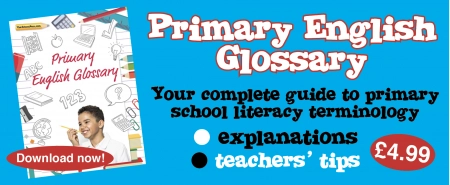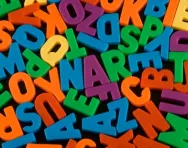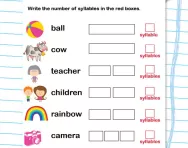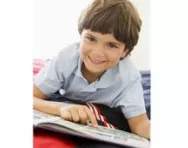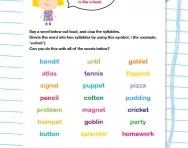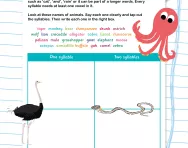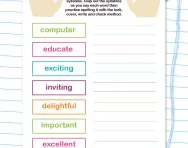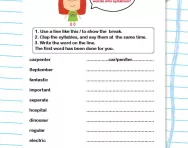Important update from TheSchoolRun
For the past 13 years, TheSchoolRun has been run by a small team of mums working from home, dedicated to providing quality educational resources to primary school parents. Unfortunately, rising supplier costs and falling revenue have made it impossible for us to continue operating, and we’ve had to make the difficult decision to close. The good news: We’ve arranged for another educational provider to take over many of our resources. These will be hosted on a new portal, where the content will be updated and expanded to support your child’s learning.
What this means for subscribers:
- Your subscription is still active, and for now, you can keep using the website as normal — just log in with your usual details to access all our articles and resources*.
- In a few months, all resources will move to the new portal. You’ll continue to have access there until your subscription ends. We’ll send you full details nearer the time.
- As a thank you for your support, we’ll also be sending you 16 primary school eBooks (worth £108.84) to download and keep.
A few changes to be aware of:
- The Learning Journey weekly email has ended, but your child’s plan will still be updated on your dashboard each Monday. Just log in to see the recommended worksheets.
- The 11+ weekly emails have now ended. We sent you all the remaining emails in the series at the end of March — please check your inbox (and spam folder) if you haven’t seen them. You can also follow the full programme here: 11+ Learning Journey.
If you have any questions, please contact us at [email protected]. Thank you for being part of our journey it’s been a privilege to support your family’s learning.
*If you need to reset your password, it will still work as usual. Please check your spam folder if the reset email doesn’t appear in your inbox.
What is a syllable?
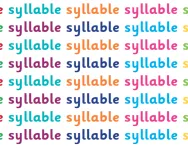
Contents
What is a syllable?
A syllable is a single, unbroken sound of a spoken (or written) word. Syllables usually contain a vowel and accompanying consonants. Sometimes syllables are referred to as the ‘beats’ of spoken language.
Syllables differ from phonemes in that a phoneme is the smallest unit of sound; the number of syllables in a word is unrelated to the number of phonemes it contains. For example: /b/, /k/, /t/, /ch/, /sh/, /ee/, /ai/, /igh/, /ear/ are all phonemes. The word ‘chat’ is made up of three phonemes (/ch/ /a/ /t/). The word ‘light’ is made up of three phonemes (/l/ /igh/ /t/). However, both the words ‘chat’ and ‘light’ have only one syllable each.
The number of times you hear a vowel (a, e, i , o, u) in a word is equal to the number of syllables a word has. A good way to identify syllables is to think about whether you need to change your mouth shape to say the next bit of the word / the new syllable.
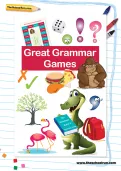
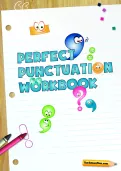
Give your child the gift of great grammar
- Perfect Punctuation Workbook
- Grammar Games Pack
- PLUS 100s of other grammar resources
Learning about syllables in primary school
Learning about syllables is part of learning how to decode and spell words. It helps children understand the conventions of English spelling, including when to double letters and how to pronounce the vowels in words they might not have seen before.
Teachers will often get children to clap out the syllables of a word, to help them to understand the concept. (A good game to introduce syllables is to ask each child to stand up and say their name, while clapping out the syllables.)
For example:
Syllables in KS1 English
Children in Key Stage 1 will be expected to read words of two syllables. They may be shown how to split the words up into syllables, in order to help them sound them out. For example: if they are shown the word ‘thunder’ and get stuck, a teach may cover the second half of the word (‘der’) and ask them to just sound out the first syllable. Once they have managed this, they uncover the rest of the word and ask them to sound this out.
Children in Key Stage 1 will also learn to spell words with two syllables, at which point they will be encouraged to separate the two syllables themselves, in order to learn the spelling of the whole word.
Syllables in KS2 English
During Key Stage 2, children will progress to learning the spellings of words containing four syllables (or possibly more). They also learn about the use of syllables in poetry.
Children may learn about syllables through writing haikus. A haiku is a Japanese poem with three lines, the first containing 5 syllables, the second containing 7 syllables and the third containing 5 syllables.
This is a haiku about a frog:
Gulps, blinks and flicks out his tongue
To snatch a black fly.
Writing haikus encourages children to think about syllables, but also to think very carefully about their word choices – it may be that one word has too many syllables and does not fit, so they have to think of a new, similar word that fits the given criteria.
Another poetic form based on syllable number is the limerick (the first, second and fifth lines rhyme and have the same number of syllables, usually eight or nine).
Syllables FAQs
What are syllables?
Syllables are the beats or chunks in a word. Each syllable has one vowel sound, like cat (1 syllable) or apple (2 syllables).
Why are syllables important?
Syllables help children break down words into manageable parts, making reading and spelling easier.
How can I help my child count syllables?
Encourage your child to clap, tap or use their fingers to count the beats in a word. For example, but-ter-fly has three claps.
What are some fun syllable activities?
Play syllable games like clapping out words, sorting pictures by the number of syllables or using apps that focus on syllable counting.
How do syllables help with reading?
Recognising syllables helps children decode longer words by breaking them into smaller, easier-to-read parts.
Can understanding syllables improve spelling?
Yes, knowing how to break words into syllables can help children spell them correctly by focusing on one part at a time.
At what age should my child understand syllables?
Most children start learning about syllables in Reception and continue developing this skill throughout primary school.
How do syllables relate to phonics?
Syllables are a key part of phonics instruction, helping children understand the structure of words and how sounds come together to form them.
